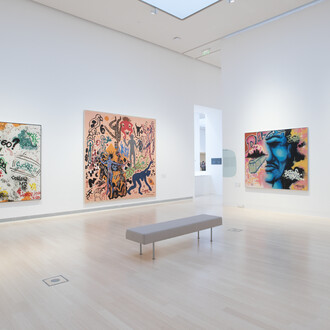Would you like to know Hungarian horse breeds? The Horse – National Horse Exhibition provides plenty of interesting and important information. We recommend the exhibition to our child visitors as well. Horses were indispensable right up to the beginning of the 20th century in warfare, in agriculture and in transportation. From the end of the 19th century equestrian sports also had become increasingly popular.
Horses were indispensable right up to the beginning of the 20th century in warfare, in agriculture and in transportation. From the end of the 19th century equestrian sports also had become increasingly popular.
In warfare we see the development from nomadic warfare through the knightly battle process to the emergence of the hussars. The visitor may learn what the difference is between a farm-wagon, a coach and between a four-wheeled carriage, and may get familiar with the most important Hungarian coach types. The guest finds many curiosities about the beginnings of urban public transportation when it still functioned with horse-driven vehicles.
A short overview is provided about the organisational development of horse breeding, and about our oldest state stud farms. In the production chain of wheat, our most important bread-grain, horses had an important role everywhere from ploughing to the transportation of bread to the shops.Today horses are increasingly used in various equestrian sports. In the exhibition you may see interesting footage about coach-driving races.
Hungarian horse breeds are demonstrated by statues by György Vastagh, Jr and László Vastagh, as well as photos by Nándor Hajba.
Our kindergartner and school-aged visitors may get familiar with horses in an interactive and playful way. They may learn what are the areas of body of the horse, how many colours horses can exhibit, and also exactly how many parts their legs have. The visitors gain information about what horses eat, why they are shod and can handle grooming and stable cleaning tools. Children can sit on a so-called phantom horse to get a sense of sitting in a saddle, while the smallest can mount a wooden pony. There are regular educational and drama programmes associated with the exhibition.
The exhibition also displays two real treasures of our museum: the skeletons of Kincsem and Imperiál, together with an explanation of their victories.Kincsem was the outstanding product of Hungarian horse breeding, whose victories remain unsurpassed to this day. She ran in a total of 54 races and won all of them. She was trained by Róbert Hesp, whose training stable is reconstructed in a scale model. The other highly successful race horse of the period was Kisbér, who won the Epsom Derby.While Kincsem and Imperiál mostly excelled on the racetrack, Imperiál was also one of the most outstanding foundation stallions. Among his descendants twels won derbys and he was a champion foundation stallion fifteen times.
The rules of gallop races and interesting information about the working of the racing industry are also provided.
















